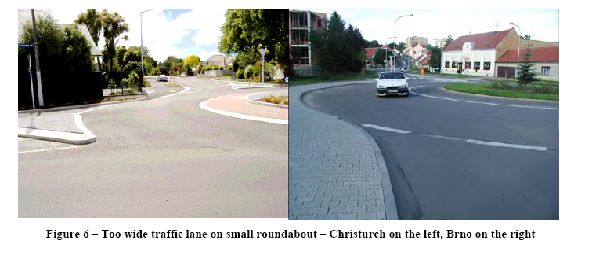Road safety audit in NZ
Where presented / published:
Liberec, Czech Republic
This presentation was given by our former employee Petr Pokorný at a conference in Liberec, Czech Republic. Petr is comparing NZ and Czech practices for roundabout design.
Conclusions
The main difference between Czech and New Zealand roundabouts is in the design parameter dimensions and in the design speed. New Zealand roundabouts are designed according to Austroads guidelines (guidelines used in Australia & New Zealand), which recommend long sight distances on the entrances and relatively high design speed. These requirements lead to larger design parameters. On the other hand, roundabouts in the Czech Republic are mainly designed more "humble" in order to reduce speeds.
Roundabout projects were one of the most often audited projects in the Czech Republic. Between 2003 and 2006 more than 20 audits of small roundabouts were carried out by a team of auditors from CDV. Results obtained from these audits are comparable with New Zealand findings. The only difference is based on a diverse style of dimension of design parameters. The most often identified deficiencies in the Czech Republic are thus similar to New Zealand findings.
The most serious deficiencies of Czech roundabouts can be summarised into the following points:
- Traffic lanes too wide on entrances, exits and within the circle,
- Absence of splitter islands, and
- Insufficient deflection of approaches and exits.
The other deficiencies are more or less similar to those described in the publication "The Ins and Outs of Roundabouts - Safety Auditor's Perspective".
The presentation (in Czech, but with many illustrations) is available online on this website.



